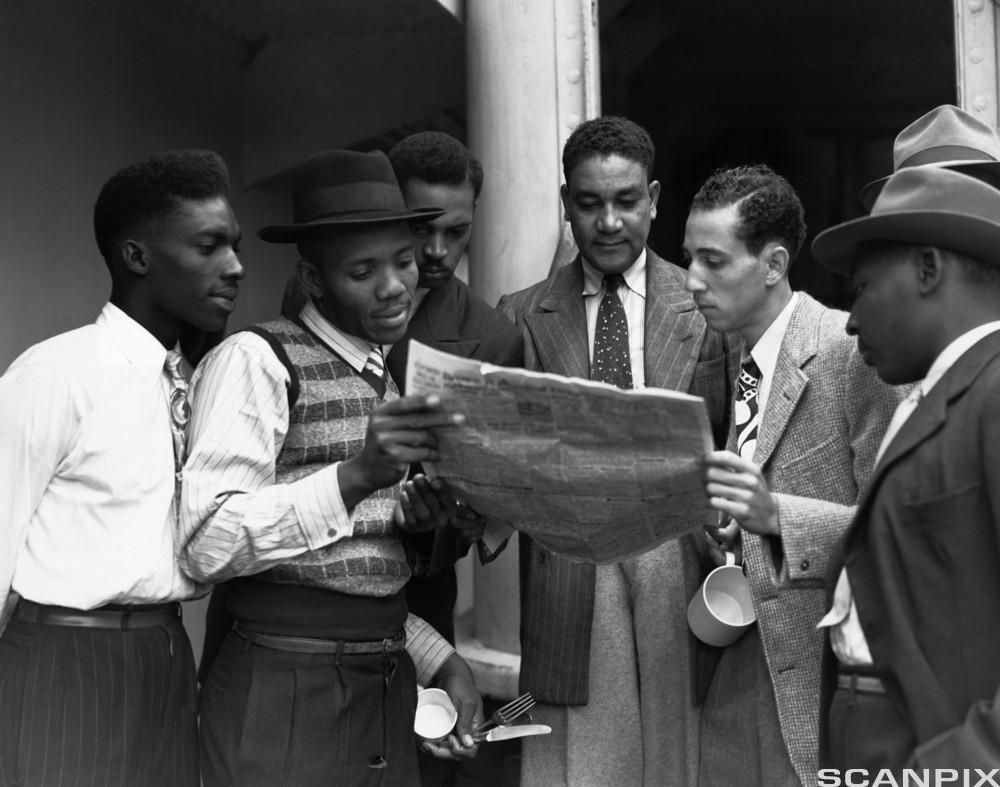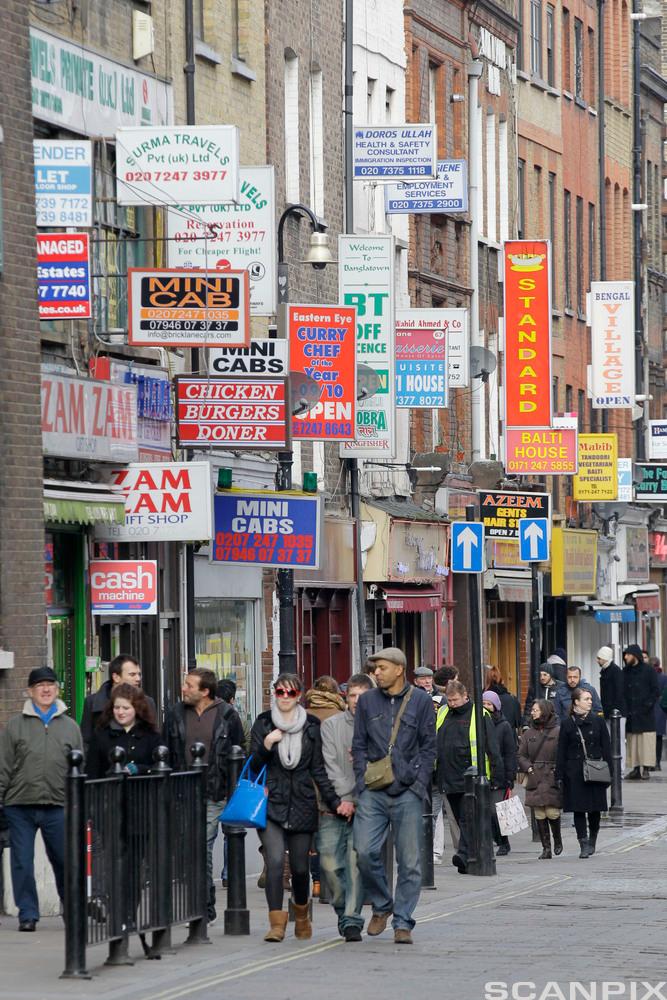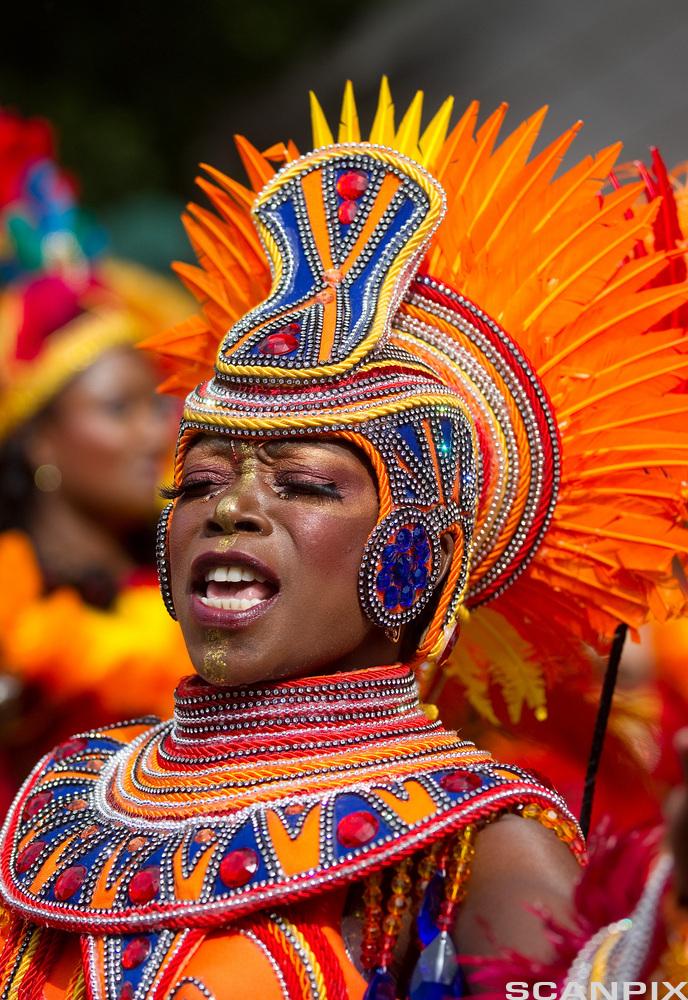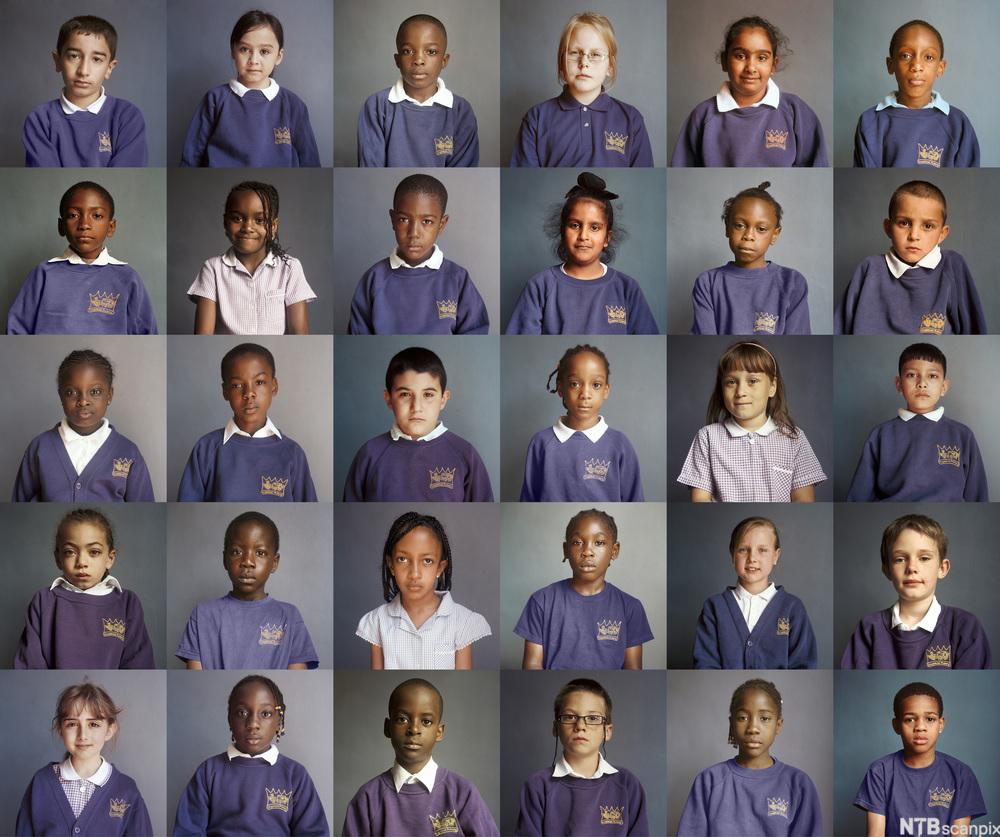
Choose ONE of the terms and make a word cloud with your associations to this word using Wordle Create, before you start working with the text.
Vocabulary
social unrest, contemporary, refugees, adventurers, labour migrants, asylum seekers, flux, decolonisation, scapegoat, humiliation, indigenous
Immigration to Britain
Many immigrants have come from European countries, notably Ireland, Britain's western neighbour. The Potato Famine in Ireland in the 1840s and social unrest were the main causes. More recently Eastern Europeans have tended to seek their fortune in Britain. Yet, the term immigrant in contemporary British public debates has come to be understood as a person coming from a poorer country, often with a different skin colour.
Refugees, adventurers, labour migrants, asylum seekers are all terms used to categorise the flux of people entering a country like Britain. Often they overlap, but sometimes the terms, and what they mean, are used interchangeably creating a muddled picture. Immigrants has thus been used as the all-encompassing term to describe groups of people entering Britain.
Post-War Immigration

During World War II British cities were bombed to pieces by Adolf Hitler’s Nazi Germany. Although Hitler never managed to invade Britain, the Blitz left urban areas in ruins. After the war, Britain needed both economic and labour assistance to rebuild society. The British got financial help from America, but they had to actively invite people from abroad to get the necessary manual labour. For this, they turned to their colonies, and especially the Caribbean islands. In 1948, the British Nationality Act gave, in practice, UK citizenship to people of the colonies, which meant that they, and people from Commonwealth countries, could enter Britain freely. This is referred to as “The Open Door Policy” where Britain literally opened their borders, and the first group of Caribbean people – 492 Jamaicans – came to Tilbury on the river Thames just south of London in 1948. This arrival is seen symbolically both as the beginning of Black Britain and the start of mass immigration to Britain. In her novel, Small Island, Andrea Levy uses her Jamaican parents' story from their encounter with England in 1948 as a source of inspiration.
The Need for Labour – Skilled and Unskilled

Not only did Britain need unskilled labour, but also skilled labour, particularly in connection with the newly established Welfare State – a system that would provide free healthcare for a needy population. The National Health Service (NHS) was in need of doctors and nurses and they were actively recruited, especially from Asian countries. In addition, many immigrants began working in the London Transport system. However, in 1962, through the Commonwealth Immigrants Act, access to Britain was restricted and immigration regulations were further tightened up in 1968 and 1971 due to increased opposition among a number of British political organisations.
In her novel, Brick Lane, Monica Ali, who is of Bangladeshi descent, portrays Nazneen who leaves Bangladesh in 1980 as an 18 year old knowing just two words of English, in order to marry Chanu, a man 20 years her senior. Chanu and his best friend, Dr. Azad, are examples of educated Asian immigrants who were more than welcome in the British labour force before the restrictions. Watch a clip from the film version – Brick Lane Trailer .
From Where to Where?

During the first decades of post-war immigration, many settlers came from the West Indies, from India, Pakistan and Bangladesh in Asia, and from Kenya, Uganda and Nigeria in Africa. Both skilled and unskilled workers settled down where there was work to be found, notably the mill towns of North West England, industrial towns in the Midlands and in London’s East End. Mill towns like Bradford, Manchester and Leeds were legacies of the industrialisation of the textile industry in the early 19th century, and thus attracted many Asians, as many of them had been involved in textile industries in their homelands. Many Africans and people from the West Indies settled in and around London, and all these areas swiftly became multicultural. The Notting Hill Carnival was first established in 1959, when it was held indoors in St Pancras Town Hall. It was widely seen as a response to the generally worsening race relations of the late 1950s and more specifically to the Notting Hill Riots which took place the year before. 1958 had seen violent clashes between white Britons and people from the West Indian community living in and around Notting Hill. The carnival tradition displayed the colourful community and became an annual event, and has in recent years been a celebration of London’s multicultural diversity.
New Empire Within Britain

Even though the immigrants who came to Britain had British passports, and were legally British, it took a long time before they felt British. The Indian-born Indian-British writer Salman Rushdie coined the term the “New Empire within Britain” referring to immigration as the other side of the British Empire. Britain historically colonised large parts of the globe, and then in the process of decolonisation people moved the opposite way, to the mother country. Britain thrived as a colonial power, but when the majority of the immigrants came not only to work but to stay and settle, the white Britons changed their tune. Increased levels of hostility between black and white Britons led to oversimplified reactions from the authorities and further restrictions were called for at many levels.
Increasing Hostility
The underlying hostility became clearer with the fall of the traditional industries in the 1960s and 70s, when full employment was no longer guaranteed. In such circumstances, white Britons tended to define immigration as a problem and used it as a scapegoat, blaming immigration for all of society’s ills. The “problem”, however, was not one of immigration as such – thousands of Irishmen, Americans, Australians and Europeans kept coming to Britain – but the arrival of non-white immigrants from former colonies. Competition for jobs, housing and positions in society, combined with the visible differences, created unrest in many inner city areas and politicians gradually moved their focus away from immigration control to regulation of race relations.
We witness this hostility in Sumitra's Story, a novel by Rukshana Smith. Here we meet Sumitra, a young girl of Indian descent, who was born in Uganda, where her family led a comfortable upper middle class life. In the early 1970s, however, Idi Amin, the infamous Ugandian dictator, chased all the foreigners out of his country. The refuge of Sumitra's family became England. Here the family's pride is severly challenged, they are despised as "Pakis" and they have to face social degradation and humiliation .
In This is England we see rising hostility due to the social unrest in the early 1980s from the point of view of a young indigenous British boy, growing up "somewhere" in the Midlands. Watch a clip – This is England Trailer .
Contribution to Society
Immigrants have contributed greatly to the development of British society. Asians helped to expand the textile industry, music like reggae and calypso was brought in from the Caribbean, and food from all the different corners of the world came to Britain’s cities. In fact, Britain’s national dish is considered to be curry, and Chinese and Bangladeshi immigrants have created cultural festivals and practices in and around their Chinatowns and Banglatowns. The Carribean inspired Notting Hill Carnival mobilise huge crowds of people, both white and black Britons.
Immigration today
Today Britain experience new waves of immigrantion from Eastern Europe, the Middle East and North Africa. Even though they contribute in many positive ways to British society, immigration is still a controversial issue. Currently, anti-immigration sentiments seem linked to the ongoing debate concerning the UK's relationship with the European Union. New political parties like the UKIP (The UK Independence Party) challenge the traditional political parties on these issues. UKIP focuses on preventing immigrants from for instance Bulgaria and Poland from coming to the UK to take advantage of the welfare system. Regardless of the outcome, immigration seems to be at the core of the debate, and this is likely to continue in the future.
Tasks and Activities
Vocabulary
Post-war Immigration Cloze
Post-war Immigration Synonyms
Tasks
Post-War Immigration to Britain – Tasks
Further Reading
The Rise and Fall of the British Empire
British Values and Identity
Multiculturalism - A Challenge?
Multicultural Britain
Film and Literature Recommendations
East is East(film)
Small Island (novel and film)
1964 (short story)
Related content
Web page at britishempire.co.uk